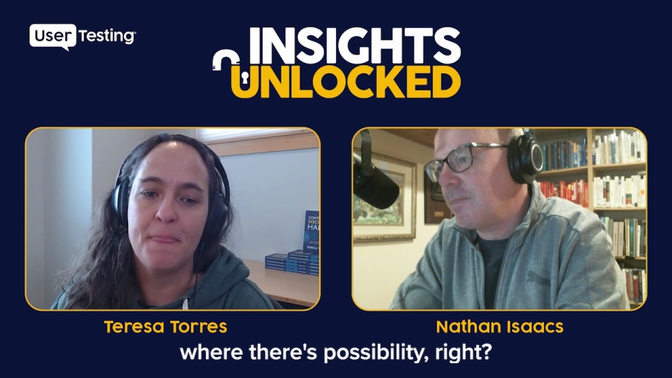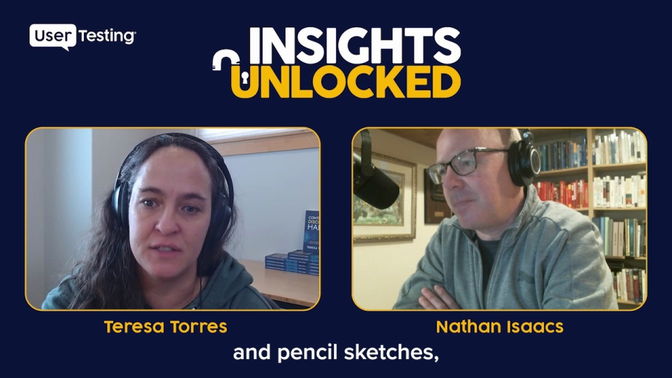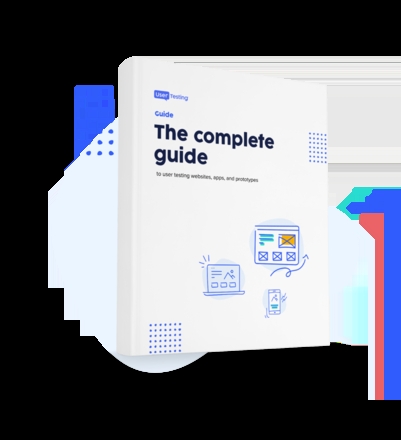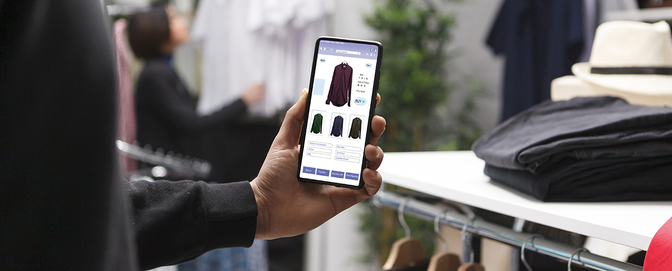
What is product discovery and why is it important?

Product discovery marks the beginning of a journey. It’s a team’s first vital step in ensuring product-market fit on their next idea or product iteration. Without a product discovery phase, product teams lose clarity on their direction. It’s the compass that guides product and delivery teams to success.
Let’s take a look at the entire product discovery process, discuss its key points, and share some best practices to ensure your team can successfully execute this important aspect of product development.
Introduction to product development
Before we dive deeper into product discovery, we have to understand product development. Product development is the process of bringing a new product to life or enhancing an existing one to better serve customer feedback. The journey spans several stages, from the initial spark of an idea to the final product launch. This is what's known as the product development lifecycle (PDLC).
A smooth and effective PDLC requires the concerted efforts of cross-functional teams, including product management, design, engineering, and marketing. The ultimate goal of product development is to create a product that not only meets customer needs but is also feasible to build and aligns with overarching business goals. Effective product discovery and product management ensure that every stage of product development is well-planned and executed, keeping the focus on delivering value to the customer.
What is product discovery?
Product discovery is an integral part of design and development. Traditionally, product discovery was viewed as a discrete phase that happened at the beginning of the PDLC. During product discovery, the product and development teams would work to identify and define the right product or feature to build.
Now, with modern product management's shift to continuous product discovery, it's often an exercise that happens throughout the PDLC, with teams running frequent usability tests to ensure their decisions are aligning with customer needs.
Get all your questions about continuous discovery answered here
Listen to continuous discovery expert, Teresa Torres's episode on Insights Unlocked here.
Generative research vs. evaluative research in product discovery
In product discovery, it's essential to differentiate between generative and evaluative research. Generative research focuses on identifying opportunities—unmet customer needs, pain points, and desires.
It’s all about gathering insights and ideas from your customers and exploring possibilities in the market. This phase is critical for uncovering what problems exist, giving your team a foundation to innovate.
On the other hand, evaluative research ensures that the solutions you're developing are hitting the mark. It answers the question: are we building the right thing? These two types of research work hand in hand. You start by identifying the problem through generative research and then validate the solution with evaluative research to make sure they align seamlessly.
By combining both, you can ensure that you're not only addressing real customer needs but also delivering solutions that truly resonate.

Common steps in product discovery
There are a few common steps that most teams take in their product discovery process. But all teams should feel free to develop their own product discovery process that's tailored to the needs of their product and users. Whether a product team is working on a new product or updating an existing one, having a clear and structured product discovery process can help your team mitigate risk and avoid wasting valuable time.
User research
Researchers conduct user interviews, surveys, and usability testing to better understand users' pain points. Product teams must understand the user's perspective to build a product that addresses user needs. By continually gathering user feedback, the product team can refine its approach to product design.
Market analysis
Product teams analyze the competitive landscape and market trends to identify opportunities and gaps in the market. Competitive research helps you position your product effectively and make informed decisions.
Defining the problem
The aforementioned research leads to the creation of a clear and specific problem statement. This statement outlines the details of the user challenge the team will try to solve.
Ideation
Design teams often run workshops and design exercises to develop solution concepts. These initial concepts may include inspirational items such as moodboards and examples of existing user experiences, or rough sketches and wireframes.
Prioritization
The team then collaborates to eliminate untenable concepts and prioritize potential solutions they think could work. To weed out the bad ideas, design teams will often present their concepts and vote based on criteria such as user value, business impact, and technical feasibility.
Prototyping, testing, and customer feedback
After prioritization, design teams create low-fidelity prototypes or mockups of the selected solutions. Teams hone their designs into a minimum viable product (MVP) to gather essential customer feedback and validate the product concept.
They identify test participants that fit their target audience and then run usability tests, interviews, or surveys to test the prototypes and gather insights. Gathering continuous user feedback ensures that the product team stays aligned with customer needs.
Iteration and validation
The team makes incremental refinements until the product is validated via positive feedback and high reports of satisfaction from test participants. The design team can then hand the prototype off to development with confidence that the experience will connect with users.
Techniques and frameworks for product discovery
Product discovery efforts rely heavily on several techniques and frameworks. Using design thinking methodologies such as impact mapping can help product teams stay focused on delivering solutions that align with business goals. These frameworks help teams develop a comprehensive understanding of the product discovery process.
Using impact mapping to navigate product discovery
Impact mapping is a powerful visual tool that helps product teams align their activities with broader business goals. This technique involves five levels: Impact, Outcomes, Outputs, Activities, and Features. By mapping out these elements, teams can better understand the relationship between their actions and the desired business outcomes. Impact mapping aids in navigating the complex problem and solution spaces, allowing product teams to prioritize features and activities that will have the most significant impact on achieving business goals.
Other techniques and frameworks
In addition to impact mapping, several other techniques and frameworks can enhance the product discovery process:
Customer journey mapping: This visual representation captures the customer’s experience across various touchpoints, helping teams identify pain points and opportunities for improvement.
User story mapping: A method for organizing and prioritizing user stories, ensuring that the development process remains user-focused
Lean canvas: A one-page business model that helps teams design and innovate new products and services quickly.
Jobs-to-be-done framework: This framework focuses on understanding the underlying needs of customers and defining solutions that address those needs effectively.
By leveraging these techniques, product teams can gain valuable insights into customer needs and develop solutions that are both innovative and practical.
Why is product discovery important?
Product discovery plays a crucial role in the success of a product or project for several reasons.
User-centric approach
Product discovery focuses on understanding and addressing user needs. Conducting thorough UX research and involving users in the process ensures that the team designs the product with the end users in mind. This increases the chances of creating a product that resonates with its target audience.
Market relevance
Through market analysis and competitive research, product teams stay informed about market trends and changing customer preferences. This means that the product remains relevant in a dynamic business environment.
Risk reduction
By validating assumptions and ideas early in the product development process, product discovery helps identify and lessen potential risks. It reduces the chances of wasting time and resources on building a product that may fail.
Efficient resource allocation
Product discovery lets teams prioritize features and solutions by potential impact and feasibility. This helps the team to allocate resources effectively and develop the most valuable features first. Sometimes, the product discovery phase reveals that a product is unnecessary or unfeasible—saving organizations time and money.
Alignment with organizational goals
Product discovery helps align the product's direction with the organization's strategic goals. These include revenue growth, customer acquisition, or competitive advantage.
Innovation and creativity
Product discovery encourages teams to solve user problems by exploring innovative solutions. This can lead them to develop creative, unique, and competitive products.
Continuous improvement
Product discovery is an iterative process that continues throughout the product’s lifecycle. It allows teams to adapt to changing circumstances, gather new insights, and make improvements as needed. This allows the product to remain valuable and competitive.
A diverse product discovery team can aid this continuous improvement by ensuring cross-functional collaboration and evolving participation to enhance insights, alignment, and decision-making.
User satisfaction
By validating the product with real users, product discovery empowers teams to deliver a product that satisfies customers. Focusing on user needs leads to higher user retention and loyalty.
Reduced cost
By forcing design teams to do their due diligence and validate ideas, the product discovery process can reduce the cost of rework and ensure that development efforts are allocated to the right features and solutions.

Data-informed decision-making
Product discovery encourages data-informed decision-making. The team relies on user feedback, market data, and metrics to make informed choices about feature development and product improvement. This user research should inform a detailed product roadmap of agreed-upon priorities and activities.
Overcoming Challenges in product discovery
The product discovery process isn't always straightforward. It comes with challenges that can hinder progress and impact the final product’s success. y recognizing these obstacles and implementing strategic solutions, product teams can navigate the discovery process more effectively.
Common challenges and solutions
1. Lack of customer feedback: One of the most significant challenges is obtaining sufficient customer feedback. To overcome this, teams should conduct customer interviews, surveys, and usability testing regularly. These activities provide direct insights into user needs and preferences, guiding the discovery process. Of course, having the right platform to quickly obtain and analyze customer feedback is vital.
2. Unclear business goals: Misalignment with business goals can derail the discovery and design process. It’s crucial to engage with stakeholders early and often to define clear business objectives and ensure that the product discovery efforts are aligned with these goals.
3. Limited resources: Resource constraints can limit the scope of product discovery. Prioritizing features and activities based on their impact and feasibility can help teams allocate resources more effectively, focusing on the most critical aspects first.
4. Difficulty in defining solutions: Generating and evaluating ideas can be challenging. Techniques like design thinking can foster creativity and help teams develop and refine potential solutions.
5. Stakeholder buy-in: Gaining stakeholder support is essential for a successful product discovery process. Regular communication and involving stakeholders in key decisions can ensure alignment and buy-in, facilitating smoother progress.
By addressing these common challenges with targeted solutions, product teams can enhance their product discovery process, setting the stage for successful product development and delivery.
Who is responsible for product discovery?
Product discovery can look different depending on the organization. Sometimes, the entire process is owned by the design team. But oftentimes, at larger organizations, the process incorporates the expertise of many different departments.
Product or project managers
Product or project managers are often responsible for overseeing product discovery. They define the product vision, prioritize features, and make strategic decisions. They also communicate the product's goals and user needs to the development team.
UX researchers
UX researchers conduct user interviews, surveys, and usability testing. By doing so, they gather insights into user needs, behaviors, and pain points. These findings inform the product's direction. They may be involved throughout the product development lifecycle to help measure the success of product changes and identify areas for improvement.
Product designers
Designers create prototypes, mockups, and user interfaces, confirming the product's design aligns with user needs and usability.
Developers
Development teams work with product managers and designers to understand the technical feasibility of proposed solutions. They provide input on what the team can build within the available resources and timeframes.
Other stakeholders
Product discovery may also involve various other stakeholders within the organization. Executives, marketing teams, and customer support may also provide input.
How can UserTesting help teams improve their product discovery process?
Product discovery is an ongoing and iterative process that continues throughout the product development lifecycle. It fosters innovation and encourages continuous improvement. Through product discovery, the team can be confident that the product aligns with user needs, market demand, and organizational objectives.
UserTesting can significantly enhance the product discovery process by offering invaluable user insights. Through our human insight platform, teams can recruit real users to interact with their product or prototype and provide direct feedback and observations. This firsthand UX information can help teams understand user behavior, preferences, pain points, and usability issues. User testing allows teams to understand their target audience better and ensure that the product meets user needs. Our platform gives quantitative and qualitative context that enables teams to make data-informed decisions.
We make the testing process faster, simpler, and more cost-effective, enabling teams to iterate and refine products on the fly. By incorporating user feedback early and consistently, teams can create user-centric products that increase their likelihood of success.

Get started with experience research
Everything you need to know to effectively plan, conduct, and analyze remote experience research.





